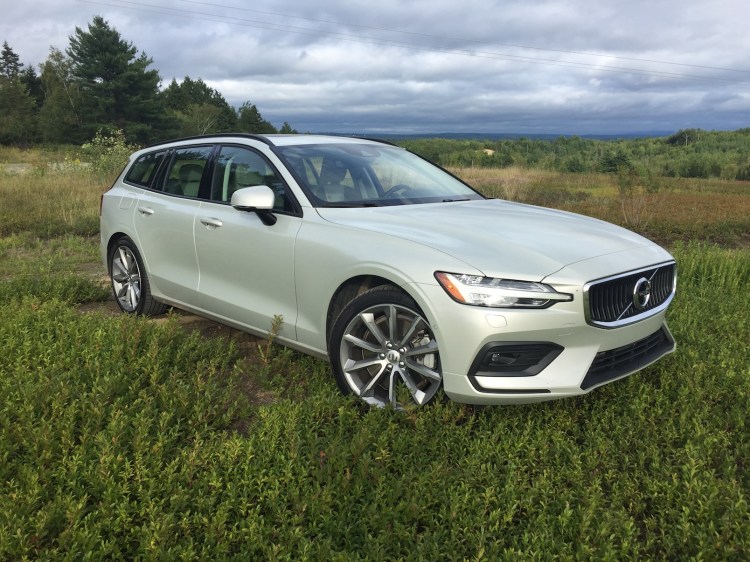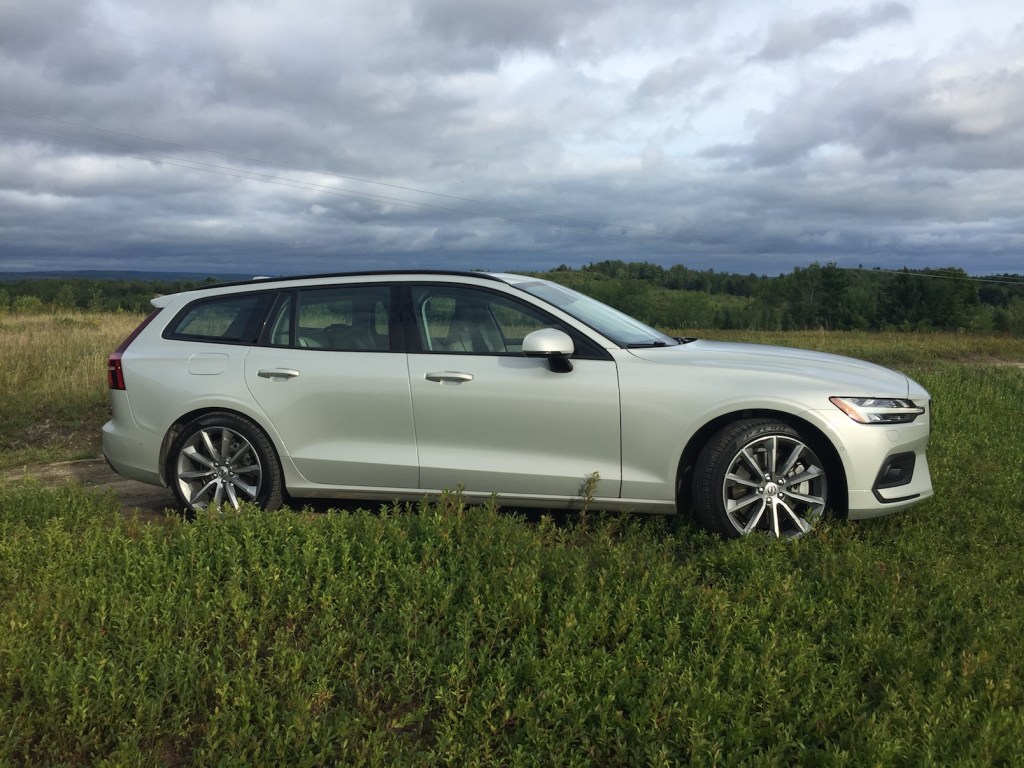Decades ago, before airbags were liberally sprinkled around your car’s cabin, regulators were trying to force consumers to use seatbelts, because crash data indicated too many drivers neglected this valuable safety tool. Death rates were rising in America, as more and more cars and commercial trucks, and many more drivers, filled our byways.
Some automakers resorted to automated seatbelts. Remember those little mouse-motor belts that slid along the door track to provide a semblance of being buckled in?
Today, passive safety restraints abound in our new cars. From fast-acting, weight-sensitive front airbags, to knee airbags and roll-over protecting side airbag curtains, to automated braking, blind-spot detection, pedestrian-detection braking, and brake-force distributing valves to provide secondary impact braking, our cars are much safer.
This week’s Volvo V60 T6-powered Momentum wagon also demonstrates the latest active driving aids to further reduce injuries and accident deaths. Featuring Volvo’s Pilot assist system, the V60, the brand’s latest compact class station wagon, engages a whole series of driving aids when you activate the dynamic cruise control.
This act adds lane-keeping assist, lane centering, emergency braking, and the automated speed and distance control central to most all dynamic cruise systems. Add aids like blind-spot detection and parking assist sensors as well as auto dimming mirrors, auto wipers, automatic headlamps, and automatic parking brake action, and you can see that we have reached far beyond electric seatbelt motors.
Although building safer cars has been a Volvo priority for decades, the latest electronic aids that appear to be leading to autonomous driving have not realized universal consumer acceptance. In fact, the latest J.D. Power Confidence Index study of more than 16,000 drivers of new cars found that 61 percent usually defeat/disable many of the latest driving aids, claiming that their performance was “annoying, inconsistent, and ‘nannying.’”
A recent AAA Foundation study found that too much of the latest technology in our cars is too distracting, which “greatly increases the risks of crashes.” I don’t think most drivers needed a study to confirm that suspicion.
Yet Volvo and others are pushing ahead with more technology towards autonomous driving. Fortunately, enhanced refinement and greater creature features remain part of the menu.
Long critical to Volvo’s lineup, its wagon-bodied cars exist where most automakers have long abandoned. Essentially a design embraced by Euro-centric drivers (and automakers) the latest V60 (about eight inches shorter than the larger V90 series) is stylishly handsome, gracefully athletic, and festooned with a well-crafted interior that rises to the top of the segment.
Packing the same cargo room as the taller XC60 crossover – 51 cubic feet (but not the same passenger space) the V60 comes in five trim levels. Momentum starts at $39,650 with a 250-hp, front drive powertrain ($43,400 with AWD); while Inscription, Cross Country, and R-design add supercharging to the turbo 2.0-liter four for 316 hp mated to an AWD chassis.
New limited edition Polestar T8, a plug-in hybrid packing 415 hp ($67,300) rounds out the lineup.
Take note of that Polestar name. Volvo will roll out a separate line of premium performance cars, some completely EV models, in the coming months as parent Gheely Motors taps into the regulatory race (subsidies) of being first to market with trendy electric cars. Given Volvo’s niche status in America (only 51,000 vehicles sold through the end of July this year, about the same as Lincoln) the Polestar lineup will be more apparent, and popular, in Europe and China.
Hits: The plaid cloth-and-leather seating is striking. It is airy, bright, and comfortable – much better in the heat than plain leather. The center dash Sensus touchscreen is huge, and controls most functions from safety programs to music to climate.
The LED headlamps – with washers, of course – are fabulous. Thor’s Hammer accents as LED daytime running lamps mean other drivers see you all of the time, and you see very well at night. Add cornering lamps plus LED fog lamps and nocturnal visibility is better than average, all of the time. The lower stance of a conventional wagon also makes cargo access easy.
Cons: That lower ride height means you can’t see around the SUVs on the road; your ground clearance is less in the winter, and the rear seat is snug for legroom. The supercharged/turbo engine provides ample thrust, and 28-mpg real-world economy, but you will need to watch the three speedometer displays so that you don’t meet any traffic officials. And that lovely Sensus screen, with the wealth of data, can be distracting, and requires precise finger touches/swipes to make selected choices.
Volkswagen has announced no more Jetta wagons for the U.S. market, leaving Volvo and the premium German automakers the remaining wagon retailers in this region. The latest V60 proves that Volvo knows how to build excellent wagons. Convincing Americans to buy them might prove to be difficult.
Comments are not available on this story.
Send questions/comments to the editors.




